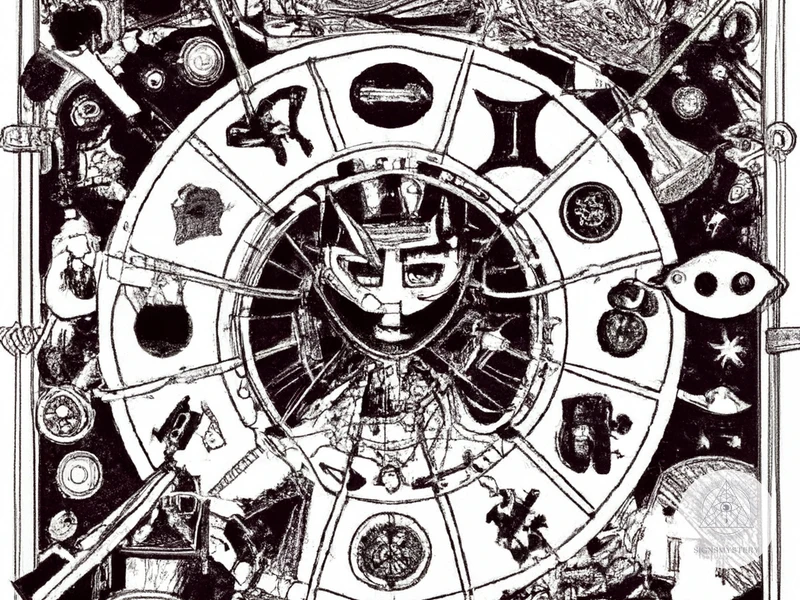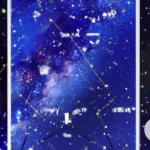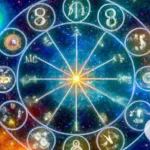Astrology and tarot have long been tools for self-reflection and understanding one’s place in the universe. But have you ever wondered how the two can work together? Specifically, how can tarot cards be used to interpret astrological transits? It may seem like a daunting task, but with a little guidance, interpreting astrological transits with tarot cards can be a useful and insightful practice. In this article, we will explore the meaning of astrological transits, the history and function of tarot cards, and how the two can be combined to gain deeper insights into our inner and outer worlds.
What are astrological transits?
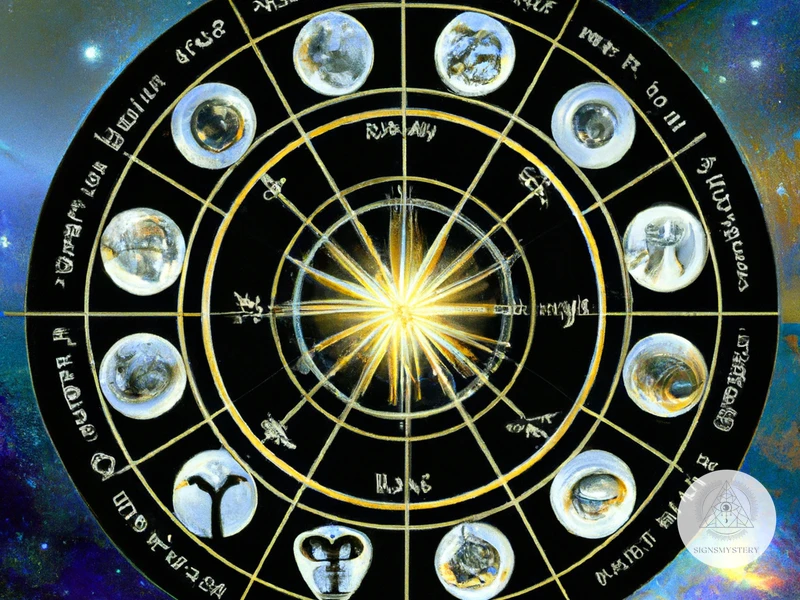
As we delve into the mystical world of tarot cards, it’s important to understand the role of astrological transits in tarot readings. Strongly connected to astrology, astrological transits are the movement of planets and their interactions with one another as they move through the zodiac. Each planet corresponds to specific aspects of our lives, and these transits can greatly influence our feelings, behaviors, and experiences. Understanding astrological transits and their significance is crucial for accurate tarot readings, which can provide us with guidance and insight into our lives. In this section, we’ll explore the meaning and importance of astrological transits and how they relate to tarot card readings. If you’re interested in learning more about tarot and astrology, be sure to check out our other articles on tarot and astrology.
Understanding astrological transits
Understanding astrological transits is crucial for using tarot cards to gain insight into our lives. Simply put, astrological transits are the movements of the planets in relation to the zodiac, and they can have a profound impact on our daily experiences.
Transits occur when a planet passes over a specific point in our birth chart, indicating a time of growth or challenges related to the qualities of that planet and the house it is transiting. These transits can last for days, weeks or even months, and can bring about significant changes in our lives. For example, a Saturn transit might bring a sense of restriction and limitation, while a Jupiter transit might bring abundance and good fortune.
It is important to note that different planets have different energies and influences, and the houses they transit can also have an impact on their expression. Additionally, the timing of transits can affect how they manifest in our lives. For example, a transit of Mars through our 4th house may indicate a period of increased conflict and tension at home, while the same transit through our 5th house might indicate a time when our passions and creativity are heightened.
By understanding the nature of astrological transits, we can use tarot cards to gain insight into ourselves and the world around us. Each tarot card has its own unique symbolism and meaning, which can be associated with astrological influences to provide deeper insight into the transits we are experiencing.
If you want to learn more about how tarot cards and astrology can be used together, check out our article on tarot and astrology.
Why do astrological transits matter?
Astrological transits are important to understand because they can provide insight into the natural cycles of life and the energy that is influencing us at any given time. It can help us understand why we may be feeling a certain way or experiencing particular challenges or opportunities.
By understanding astrological transits:
| We can: | Examples: |
| Gain insight into the energy that is influencing us(Tarot vs Astrology) | Recognizing a Mercury retrograde and understanding how it may affect our communication and technology (Example: The High Priestess for a Mercury Retrograde) |
| Prepare for challenges and opportunities ahead(Tarot Spreads and Astrology) | Anticipating a major life change during a Uranus transit (Example: The Tower for a Uranus Transit) |
| Connect with our inner selves and spiritual journey(Tarot Cards and Houses in Astrology) | Reflecting on personal growth during a Saturn return (Example: The Wheel of Fortune for a Saturn Return) |
| Gain a deeper understanding of our personal astrology(Tarot and Ruling Planet Influence) | Understanding how our individual birth chart may be affected by a current transit |
| Navigate planetary retrogrades more smoothly(Tarot Cards and Planetary Retrogrades) | Preparing for a Neptune retrograde and reflecting on opportunities to cultivate inner awareness and intuition |
| Align with the natural rhythms of the universe(Tarot Cards and Lunar Cycles in Astrology) | Reflecting on the phases of the moon and how it may impact our emotions and inner wisdom |
Understanding astrological transits can help us navigate through life with a greater sense of purpose, clarity, and insight.
What are tarot cards?
For those who are unfamiliar, tarot cards may seem like nothing more than mystical, fortune-telling tools. However, there is much more to tarot cards than meets the eye. Tarot cards are a deck of 78 cards that have been used for centuries for divination and self-reflection. They can be seen as a physical manifestation of the unconscious mind, representing the collective wisdom of our inner selves. In fact, tarot cards have often been used in psychological practices as a means of tapping into the deeper levels of the psyche. To understand how tarot cards can be used in interpreting astrological transits, it’s important to first understand the history and basic principles behind tarot cards. Let’s explore.
To learn more about the influence of tarot card’s ruling planet, see our article on tarot and ruling planet influence.
The history of tarot cards
The origin of tarot cards is unclear, and there is some disagreement among historians about where and when they were created. However, there are several theories about the history of tarot cards:
- The Egyptian theory: Some historians believe that tarot cards originated in ancient Egypt, where they were used as a divination tool.
- The Italian theory: Others believe that tarot cards were created in Italy in the 14th or 15th century as a playing card game.
- The French theory: Another theory is that tarot cards were developed in France in the 17th century as a way to interpret and understand astrology.
Regardless of their origin, tarot cards have become a popular tool for divination and self-reflection. In the 19th century, the hand-drawn tarot cards were replaced with printed versions, and various artists and publishers created their own interpretations of the cards. Today, there are hundreds of different tarot decks available, each with their own unique artwork and symbolism. Some of the most popular tarot decks include the Rider-Waite-Smith deck, the Tarot of Marseille, and the Thoth Tarot.
How do tarot cards work?
Tarot cards are believed to have been originated in the fourteenth century Italy, and since then they have been used in divination practices to gain insight into one’s future, past, or present. The tarot consists of a deck of 78 cards, with each card having its unique symbolism and meaning. The cards are divided into two categories: the Major Arcana, consisting of 22 Trump cards, and the Minor Arcana, consisting of 56 suit cards which are further divided into four suits – Swords, Cups, Wands and Pentacles.
The tarot cards work by tapping into one’s intuition and subconscious mind. The reader often shuffles the cards while focusing on the question or the topic at hand. When the cards are laid out in a spread, the reader interprets the symbols and images on the cards based on their intuition and knowledge of tarot symbolism. The cards provide a visual representation of the energies present around the question or the topic, and the reader can use them to gain insights and guidance.
The imagery and symbolism of the tarot cards are open to interpretation and can vary depending on the reader and the individual being read for. The cards themselves do not determine one’s fate or future, but instead offer guidance, insight, and self-reflection. The tarot is not a tool for predicting future events with certainty, but instead is a tool for gaining clarity and understanding of the energies and influences surrounding a situation.
The Major Arcana cards are considered to be the most powerful cards in the deck, and are often associated with significant life events or lessons. The Minor Arcana cards provide more detailed insight into specific areas of life or situations. The four suits of the Minor Arcana represent different aspects of life – Swords represent challenges and conflicts in the mental realm, Cups represent emotions and relationships, Wands represent passion and creativity, and Pentacles represent material and practical aspects of life.
Tarot cards work by allowing individuals to tap into their intuition and gain insights and guidance from the symbolism and imagery present on the cards. Tarot readings can provide individuals with a fresh perspective and offer guidance for making decisions or navigating challenging situations.
How tarot cards can be used to interpret astrological transits
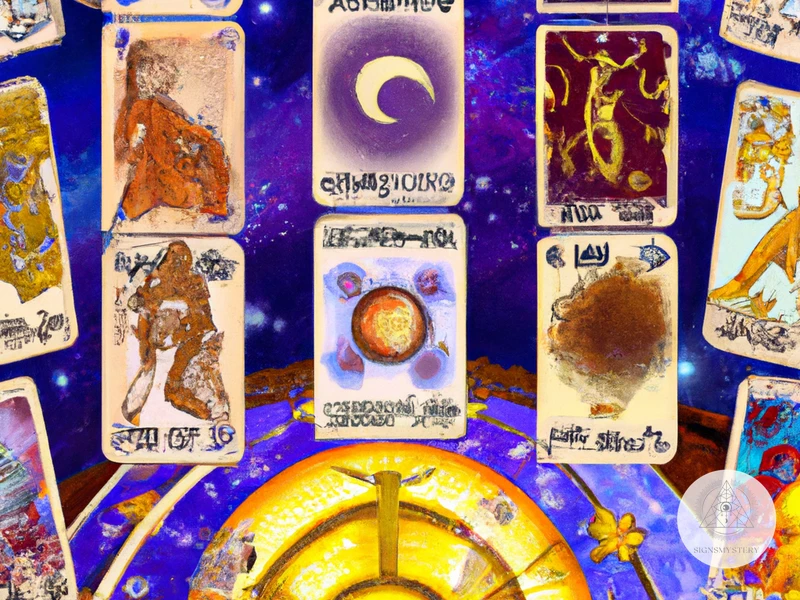
The combination of astrology and tarot has been gaining popularity in recent years, as enthusiasts have discovered the powerful insights that can be gained by interpreting astrological transits with tarot cards. By using tarot cards as a tool for divination and self-exploration, it becomes possible to deepen our understanding of the energies and influences present during different astrological transits. In this section, we will explore how tarot cards can be used to interpret astrological transits, including tips on selecting a tarot deck, assigning cards to astrological symbols, and interpreting the cards in relation to transits.
Choosing a tarot card deck
When it comes to interpreting astrological transits using tarot cards, choosing the right tarot card deck is crucial. The tarot card deck you choose will impact the way you interpret the cards and their meanings. Here are some things to consider when choosing a tarot card deck:
- Artistic Style: Some tarot card decks are more traditional while others have a more modern or unique artistic style. Choose a deck whose artistic style resonates with you and speaks to your imagination.
- Theme: Some tarot card decks are based on specific themes such as fairies, animals or a particular mythological tradition. Pick a deck with a theme that you feel connected to and interested in.
- Included Guidebook: Some tarot card decks come with a guidebook that explains the meanings of each card. If you are new to tarot or if you prefer a more structured approach, look for a deck that includes a guidebook.
- Size: Tarot card decks come in different sizes. Consider the size of the cards and their illustrations. Some decks have larger illustrations that can help you see the details more clearly, while others may be smaller and more portable.
- Intuition: In the end, the most important factor is your intuition. Choose a deck that feels right to you, that sparks your curiosity and inspires your intuition. Your instinct will guide you to the deck that resonates with your energy and intuition.
Remember that there is no “right” or “wrong” deck to choose. What matters most is the connection that you develop with the cards and the meanings that they hold for you. When choosing a tarot card deck, take the time to explore and find the one that feels right.
Assigning tarot cards to astrological symbols
One of the most important steps in using tarot cards to interpret astrological transits is to assign each astrological symbol to a specific tarot card. This process can seem confusing and overwhelming at first, but with a bit of patience and practice, it can become much easier.
Here are some tips to help you assign tarot cards to astrological symbols:
- Start by familiarizing yourself with the basic meanings and symbolism of each tarot card. This will help you identify which cards are most closely aligned with each astrological symbol.
- Consider the qualities and traits associated with each planet, sign, and aspect. For example, Mercury is associated with communication and quick thinking, while Uranus is associated with sudden changes and upheavals.
- Look for correspondences between specific tarot cards and astrological symbols. For example, The Tower card is often associated with sudden and unexpected events, which could be indicative of a Uranus transit.
- Experiment with different tarot decks and see which ones resonate with you the most. Some decks may have more obvious connections to astrology, while others may require a bit more interpretation and intuition.
- Remember that tarot cards are a tool for interpretation and reflection, and there is no one “right” way to assign them to astrological symbols. Trust your instincts and be open to exploring different possibilities and connections.
By taking the time to assign tarot cards to astrological symbols, you can create a powerful system for interpreting and understanding the energies and influences of different transits. This process can also deepen your connection to the tarot and astrology, and help you develop your intuition and self-awareness.
Interpreting tarot cards in relation to astrological transits
One of the most important aspects of interpreting tarot cards in relation to astrological transits is understanding the meanings of both the card and the astrological symbol. Here are some steps to follow when interpreting tarot cards in relation to astrological transits:
- Step 1: Familiarize yourself with the tarot card meanings. Each tarot card has a unique meaning and can represent different things depending on the context in which it appears. Some cards may represent positive energy, while others may represent challenges or obstacles. Understanding the basic meanings of the cards is essential for interpreting them in relation to astrological transits.
- Step 2: Understand the astrological transit. Knowing the astrological transit is important for interpreting tarot cards in relation to the transit. Each transit has its own unique energy and can impact our lives in different ways. Understanding the energy of the transit can help you interpret the tarot card more accurately.
- Step 3: Consider the relationship between the tarot card and astrological transit. Look at the symbolism of the tarot card and relate it to the energy of the transit. For example, The Tower card may indicate sudden change, disruption, or upheaval, which could be associated with a Uranus transit that often brings unexpected events. It’s important to consider both the positive and negative aspects of the card and how it may relate to the transit.
- Step 4: Use intuition and personal experience. Tarot readings are not a one-size-fits-all approach, and using your intuition and personal experience can help in interpreting the cards in relation to astrological transits. Trust your instincts and consider your own experiences to gain deeper insights into the interpretation.
Interpreting tarot cards in relation to astrological transits can provide valuable insights into our personal growth and development. By understanding the meanings of both the tarot card and the astrological transit, we can gain deeper insight into our lives and the energies that impact us.
Examples of tarot cards used in interpreting astrological transits
As we delve deeper into the realm of using tarot cards as a tool for interpreting astrological transits, it’s important to understand the relationship between specific tarot cards and astrological events. While each astrological transit and tarot card holds unique meaning and interpretation, we’ve compiled a list of examples to offer some guidance and inspiration. So, let’s explore how tarot cards can be utilized to gain insight into the nuances of astrological transits.
The High Priestess for a Mercury retrograde
The High Priestess tarot card is often associated with intuition, secrets, and hidden knowledge. When looking at a Mercury retrograde transit, which is known for communication breakdowns and technological mishaps, the High Priestess card can offer insight into how to navigate this period with grace and awareness.
Symbolism of the High Priestess card: The High Priestess is often depicted as a woman seated between two pillars, with a veil behind her symbolizing a hidden knowledge or mystery. She holds a scroll or book, which represents ancient knowledge and wisdom.
Interpretation of the High Priestess during a Mercury retrograde: During a Mercury retrograde, communication can become unclear and misunderstandings may arise. The High Priestess encourages us to look beyond the surface level of communication and tap into our intuition and inner knowing. Trusting our instincts is key during this time.
Using the High Priestess card as guidance: Drawing the High Priestess card during a Mercury retrograde can be a sign to slow down and listen to our inner voice. Keeping a journal to track our dreams, thoughts, and insights can be helpful in connecting with our intuition. It is also important to double check all communication and contracts, as things may not be as straightforward as they appear.
The High Priestess card can provide guidance and insight during a Mercury retrograde transit. Trusting our intuition and looking beyond surface-level communication can help us navigate this potentially challenging time with grace and ease.
| Symbolism of the High Priestess card | Interpretation of the High Priestess during a Mercury retrograde | Using the High Priestess card as guidance |
|---|---|---|
| The High Priestess is often depicted as a woman seated between two pillars, with a veil behind her symbolizing a hidden knowledge or mystery. She holds a scroll or book, which represents ancient knowledge and wisdom. | During a Mercury retrograde, communication can become unclear and misunderstandings may arise. The High Priestess encourages us to look beyond the surface level of communication and tap into our intuition and inner knowing. Trusting our instincts is key during this time. | Drawing the High Priestess card during a Mercury retrograde can be a sign to slow down and listen to our inner voice. Keeping a journal to track our dreams, thoughts, and insights can be helpful in connecting with our intuition. It is also important to double check all communication and contracts, as things may not be as straightforward as they appear. |
The Tower for a Uranus transit
When it comes to interpreting astrological transits with tarot cards, The Tower card can be particularly insightful for a Uranus transit. Uranus is known for bringing unexpected change and disruption, and The Tower represents a similar concept in the tarot.
The Tower card depicts a tall tower being struck by lightning, with its crown-like top falling off and people falling out of the tower. This symbolizes a sudden upheaval or crisis that destroys what
Subscribe to Our Newsletter
Sign up to receive the latest news and updates.
During a Uranus transit, unexpected events can shake up our lives and force us to reassess our beliefs and priorities. The Tower card reminds us that sometimes, destruction is necessary in order to rebuild and grow.
This card can be a reminder to stay grounded and adaptable during times of change, even if it may be uncomfortable at first. It can also indicate the need to let go of old patterns and structures that are no longer serving our highest good.
When The Tower card appears in a reading during a Uranus transit, it is important to approach it with an open mind and embrace the unexpected. This may be a challenging time, but it can ultimately lead to growth and new opportunities.
To further understand the meaning of The Tower during a Uranus transit, let’s take a closer look at the following table:
| Symbol | Meaning | Interpretation |
|---|---|---|
| The Tower | Unexpected upheaval or crisis | Represents the sudden changes that can occur during a Uranus transit |
| Lightning | Flash of insight or enlightenment | Indicates that the upheaval may ultimately lead to growth and understanding |
| Crown-shaped top of tower | Represents authority or power | Symbolizes the need to let go of old power structures and beliefs that are no longer serving us |
| People falling out of tower | Loss, chaos, or destruction | Represents the turbulent nature of change and the need to find stability amidst chaos |
The Tower can be a powerful tarot card for interpreting Uranus transits and reminding us to embrace unexpected changes as opportunities for growth and transformation.
The Wheel of Fortune for a Saturn return
One notable example of using tarot cards to interpret astrological transits is the Wheel of Fortune card in relation to a Saturn return. A Saturn return is a significant astrological milestone that occurs when the planet Saturn returns to the same position in the sky that it was in at the time of a person’s birth – this typically happens every 29.5 years. This transit is often associated with major life changes and challenges.
The Wheel of Fortune card represents the cyclical nature of life and the ups and downs that come with it. The card features a large wheel with various symbols, such as an angel and a sphinx, representing the fates that control our lives. The card typically suggests that change is on the horizon and that it is a time to embrace a new cycle in life.
When interpreting the Wheel of Fortune card in relation to a Saturn return, it is important to consider the card’s message of change and embracing new cycles. Many people experience significant changes during their Saturn return, such as career shifts, relationship changes or spiritual awakenings. The Wheel of Fortune card can provide insight and guidance during these tumultuous times.
Additionally, the appearance of the Wheel of Fortune card during a Saturn return can indicate that there are significant karmic lessons to be learned. This is because Saturn is associated with karma and the consequences of our actions. The Wheel of Fortune card reminds us that the outcomes we experience are a result of our past actions and that we have the power to influence our future by making positive choices in the present moment.
It is important to note that interpreting tarot cards in relation to astrological transits is a highly personal experience and the meanings can vary depending on the individual and their unique circumstances. It is recommended to approach this practice with an open mind and to use the cards as a tool to gain insight and self-reflection. Other astrological transits may also be incorporated into the interpretation of the Wheel of Fortune card, depending on the individual’s birth chart and the current planetary positions.
In conclusion, using the Wheel of Fortune card to interpret a Saturn return can provide valuable insight and guidance during a significant astrological milestone. The card’s message of embracing change and cycles, as well as the reminder to consider karmic actions, can offer comfort and direction during this challenging time.
Tips for using tarot cards to interpret astrological transits
As you start using tarot cards to delve into the intricacies of astrological transits, it’s important to keep a few things in mind. Tarot can be a powerful tool for gaining insight and clarity, but it’s essential to approach it with intention and mindfulness. In this section, we’ll explore some helpful tips for utilizing tarot cards in your astrological interpretations, from journaling your experiences to using tarot as a tool for self-reflection. Let’s dive in and explore ways to use tarot cards to enhance your understanding of astrological transits.
Keep a tarot journal
One helpful tip for using tarot cards to interpret astrological transits is to keep a tarot journal. This can be a physical journal or a digital one, depending on your personal preference.
Here are some reasons why keeping a tarot journal can be beneficial:
- Track your progress: Writing down which cards you drew for certain transits can help you look back and see patterns over time. This can give you a better understanding of how astrological transits affect you personally.
- Record your interpretations: Writing down your interpretations of each card can help you reflect on how accurate your interpretations were. This can help you improve your tarot reading skills over time.
- Reflect on your experiences: In addition to recording which cards you drew and your interpretations of them, you can also write down any thoughts or feelings you had during the reading. This can help you better understand how the transit is affecting you on an emotional and spiritual level.
- Refer back to your journal: Having a record of your tarot readings can be helpful in the future when you experience similar transits. You can refer back to your journal to see how you responded to the transit last time and use that information to make decisions about how to navigate the current transit.
Keeping a tarot journal can be a powerful tool for self-reflection and personal growth. By recording your tarot readings and interpretations, you can gain a deeper understanding of how astrology affects you and use that knowledge to make more informed decisions in the future.
Avoid relying too heavily on tarot cards
When it comes to interpreting astrological transits with tarot cards, it’s important to remember that tarot cards are just one tool in your toolkit. While they can be incredibly insightful and provide valuable guidance, it’s important to avoid relying too heavily on them. Here are a few reasons why, and some tips for using tarot cards in a balanced and helpful way:
- Variability: Tarot cards are meant to provide guidance and insight, but they are not a fixed or definitive answer. Different readers may interpret the same card in different ways, and the interpretation can also vary depending on the context of the reading. It’s important to not rely solely on the tarot cards for all your decision-making.
- Bias: It’s important to recognize that tarot readings can be influenced by our own beliefs, biases, and expectations. It’s important to approach a reading with an open mind and be willing to accept messages that we may not want to hear.
- Context: Tarot readings are also influenced by the context of the reading. The same card might have a different meaning depending on the specific astrological transit, personal circumstances, and the question asked. It’s important to use tarot cards alongside other methods of interpretation and self-reflection.
- Use as a tool: One way to avoid relying too heavily on tarot cards is to use them as a tool for self-reflection and guidance. It’s important to remember that the power lies within us rather than in the cards themselves. Use tarot cards as a tool to gain insight and understanding, but also be willing to take responsibility for your own decision-making and actions.
By keeping these points in mind and using tarot cards in a balanced and thoughtful way, you can gain valuable insight into astrological transits that can help guide you on your journey.
Use tarot cards as a tool for self-reflection
Tarot cards can be used not only for interpreting astrological transits but also as a tool for self-reflection. The images on the tarot cards can serve as mirrors that reflect our inner thoughts and emotions, helping us to gain insight and clarity about our lives. Using tarot cards as a tool for self-reflection involves approaching them with an open mind and heart, and being willing to explore the messages that they hold.
One way to use tarot cards for self-reflection is to pull a card each day and reflect on the imagery, symbolism, and meaning of the card. This can provide insight into our current state of mind and emotions, and offer guidance on how to approach our day with more clarity and intention.
Another way to use tarot cards as a tool for self-reflection is to ask a specific question, such as “What is blocking me from achieving my goals?” or “What can I do to improve my relationships?” and pulling a card to see what messages the cards hold for us. The card pulled can provide guidance and insights on how to move forward and address these challenges.
It’s important to realize that tarot cards are not a magic tool to predict the future, but rather a tool to help us gain clarity and understanding about our current circumstances. The cards are a reflection of our own inner thoughts and emotions, and can help us to connect more deeply with our intuition and inner wisdom.
Using tarot cards for self-reflection can be a powerful way to gain insight and clarity about our lives. By approaching the cards with an open mind and heart, and being willing to explore the messages that they hold, we can deepen our understanding of ourselves and our life’s path.
Conclusion
In conclusion, interpreting astrological transits with tarot cards can be a powerful tool for gaining insight and understanding into the energies and influences at play in our lives. By combining the ancient art of astrology with the intuitive imagery of tarot cards, we can tap into our subconscious and receive messages from the universe.
It is important to approach this practice with respect and intention, and to choose a tarot deck that resonates with us personally. We should also remember to not rely too heavily on tarot cards, but rather use them as a tool for self-reflection and guidance.
Keeping a tarot journal can be a helpful way to track our interpretations and insights over time, and to notice patterns and themes that may emerge.
Overall, interpreting astrological transits with tarot cards can be a rewarding and enlightening practice for anyone interested in astrology, tarot, and personal growth. It allows us to connect with the archetypes and energies of the universe, and to gain a deeper understanding of ourselves and our place in the cosmos.
Frequently Asked Questions
What is the difference between astrology and tarot?
Astrology involves the study of the planets and their movements in relation to human behavior and events, while tarot is a form of divination that uses a deck of cards to gain insight into past, present, and future situations.
Can tarot cards predict the future?
Tarot cards are not meant to predict the future with certainty, but rather offer guidance and insight into potential outcomes based on present circumstances.
How does one choose a tarot card deck?
A good starting point is choosing a deck with artwork that resonates with you, whether it be traditional or modern designs. It’s also important to choose a deck that reflects your personal beliefs and values.
Can tarot cards be used to make important life decisions?
Tarot cards can be a helpful tool for gaining insight and clarity into difficult decisions, but ultimately the decision should be based on one’s own intuition and judgement.
What does it mean to assign tarot cards to astrological symbols?
Assigning tarot cards to astrological symbols involves connecting the themes and energies of each tarot card to the symbolism and meaning of the corresponding astrological planet or sign.
What should I do if I receive an unfavorable tarot reading?
It’s important to keep in mind that tarot readings are not always positive, but can offer insight into challenges and areas for growth. It’s important to reflect on the advice given and take action accordingly.
Do I need to have knowledge of astrology to interpret astrological transits with tarot cards?
While knowledge of astrology can be helpful, it is not necessary to interpret astrological transits with tarot cards. The symbolism and themes of each card can offer insight into the energies and themes of a specific transit.
Can tarot cards help me understand my relationships?
Yes, tarot cards can offer insight into complicated relationship dynamics and can provide guidance on how to approach communication and connection with others.
How often should I consult tarot cards for guidance?
There is no specific frequency for consulting tarot cards, as it is a personal choice based on individual needs and circumstances. Some people consult tarot cards on a daily basis, while others may only turn to them during times of uncertainty or change.
Is it possible to become overly reliant on tarot cards?
Yes, it is possible to become overly reliant on tarot cards as a source of guidance, rather than trusting one’s own intuition and judgement. It’s important to use tarot cards as a tool for self-reflection and not as a substitute for personal agency.

